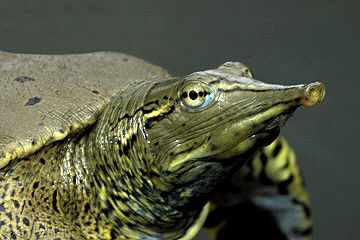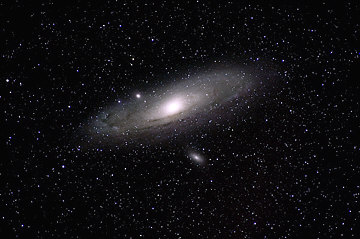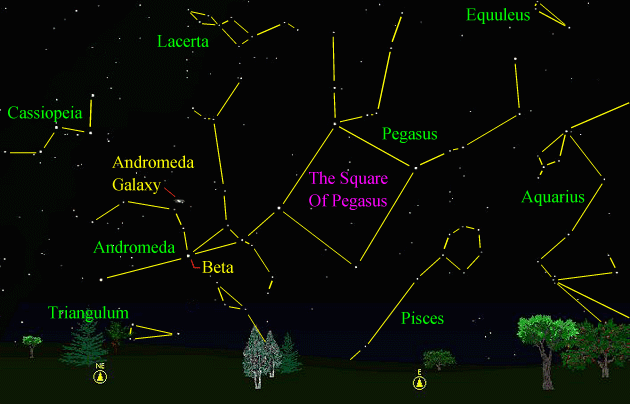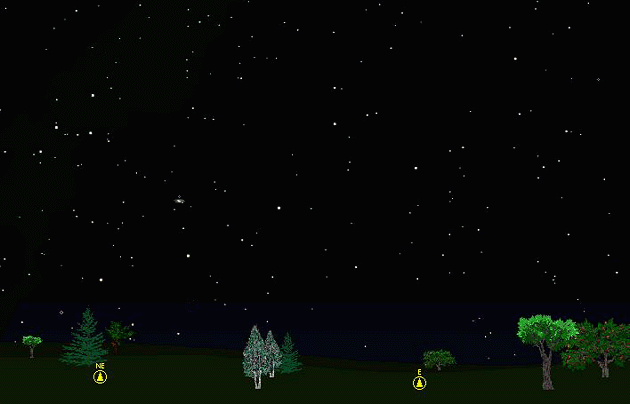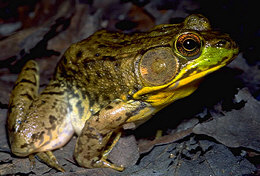The purpose of this feature is to give scout leaders, educators and naturalists an idea of some of the natural events coming up each month. We will try to cover a variety of natural events ranging from sky events to calling periods of amphibians, bird and mammal watching tips, prominent wildflowers and anything else that comes to mind. We will also note prominent constellations appearing over the eastern horizon at mid-evening each month for our area for those who would like to learn the constellations. If you have suggestions for other types of natural information you would like to see added to this calendar, let us know! Note: You can click on the hyperlinks to learn more about some of the featured items. To return to the Calendar, hit the "back" button on your browser, NOT the "back" button on the web page. All charts are available in a "printer friendly" mode, with black stars on a white background. Left clicking on each chart will take you to a printable black and white image.
Notes and Images From July 2006 An Interesting Turtle
In July we participated in a wildlife inventory in West Tennessee. This Eastern Spiny Softshell, Apalone spinifera spinifera, was found by others participating in the inventory. It was nice to get a close look, as softshell turtles are extremely wary by nature and can be difficult to approach. The shell is quite flat, and as their name implies, very leathery and flexible. The neck is very long when extended. The spines referred to in the common name are quite small and can be seen in the above image projecting from the front edge of the shell. The diet of the Eastern Spiny Softshell consists primarily of crayfish and other invertebrate animals, but their diet also includes some vegetation. The females are larger than the males, and measure up to 17 inches in length. Eastern Spiny Softshells occur in rivers and other bodies of water statewide. A Summer Black-billed Cuckoo On July 6th, I heard a Black-billed Cuckoo call several times from a row of trees near our house. Although the Yellow-billed Cuckoo is a common summer resident, the Black-billed Cuckoo is rare during the summer months in Middle Tennessee. We heard it once more a couple of days later, but have not heard it since.
Sky Events for August 2006: Evening Sky: Bright Jupiter is about 30 degrees above the southwest horizon at dusk in the constellation Libra. It is the first star-like object to appear after sunset. Mars is very low in the western sky at dusk at the beginning of August, and becomes lost in the twilight glow by mid-month. Be aware that an e-mail now circulating about "the closest approach of Mars in recorded history" is an old e-mail and refers to the opposition of Mars of August, 2003. Earth next draws near Mars in December of 2007. Morning Sky: The Perseid meteor shower peaks in the early morning hours of August 12th. Unfortunately, the waning gibbous moon will tend to wash out all but the brightest Perseids. Venus rises at the start of morning twilight and has some nice encounters with Mercury and Saturn this month. On August 9th and for a few days after, look about 2 degrees below Venus for the planet Mercury. Then, in the third week of August, Saturn emerges from the dawn glow and joins the party. On the morning of August 22nd, Saturn is between Mercury and Venus, and all three planets plus a waning crescent moon are within a 7-1/2 degree circle.
Constellations: The views below show the sky looking east at 9:50pm CDT on August 15th. The first view shows the sky with the constellation outlined and names depicted. Star and planet names are in yellow. Constellation names are in green. The second view shows the same scene without labels. New constellations this months are Pegasus, the Flying Horse, Andromeda, Princess Andromeda, Triangulum, the Triangle, Pisces, the Fishes, and Aquarius, the Water Bearer.
Find the "Square of Pegasus" and work your way outward from it to the constellations around it. Look above beta Andromedae (see the chart below) and see if you can pick out the faint glow of the Andromeda Galaxy, over 2 million light years away! When you look at this galaxy you're seeing light that began its journey to us in the Pleistocene epoch. To get the best look, wait until the galaxy climbs high in the sky. The Andromeda Galaxy was first shown on star charts prepared in 905AD by the Persian astronomer, Al Sufi, and was referred to as the "Little Cloud." That well describes its appearance to the naked eye, and in dark skies it's not hard to spot. City dwellers may need binoculars to pick it out. Simon Marius, in 1610, was among the first to observe the Andromeda Galaxy through a small telescope. He compared its soft glow to "the light of a candle shining through horn." In dark skies, those using small telescopes may pick out the small satellite galaxies M32 (above and left of the nucleus of M31 in the above image) and NGC 205 (below).
On Learning the Constellations: We advise learning a few constellations each month, and then following them through the seasons. Once you associate a particular constellation coming over the eastern horizon at a certain time of year, you may start thinking about it like an old friend, looking forward to its arrival each season. The stars in the evening scene above, for instance, will always be in the same place relative to the horizon at the same time and date each August. Of course, the planets do move slowly through the constellations, but with practice you will learn to identify them from their appearance. In particular, learn the brightest stars for they will guide you to the fainter stars. Once you can locate the more prominent constellations, you can "branch out" to other constellations around them. It may take you a little while to get a sense of scale, to translate what you see on the computer screen or what you see on the page of a book to what you see in the sky. Look for patterns, like the stars that make up the "square of Pegasus." The earth's rotation causes the constellations to appear to
move across the sky just as the sun and the moon appear to do. If you go
outside earlier than the time shown on the charts, the constellations will be
lower to the eastern horizon. If you observe later, they will have climbed
higher. As each season progresses, the earth's motion around the sun
causes the constellations to appear a little farther towards the west each
night for any given time of night. If you want to see where the
constellations in the above figures will be on September 15th at 9:50pm CDT, you
can stay up till 11:50pm CDT on August 15th and get a preview. The westward
motion of the constellations is equivalent to two hours per month. A good book to learn the constellations is H. A. Rey's
classic, The Stars, A New Way to See Them. Rey's depictions of the
constellations and witty commentary are terrific. A good general reference book on astronomy is the Peterson
Field Guide, A Field Guide to the Stars and Planets, by Pasachoff.
The book retails for around $14.00. A good beginners software program for learning the night sky is the Starry Night Beginner program. Visit the Starry Night web site at www.starrynight.com The program retails for around $30.00 and contains a wealth of information.
Amphibians:
Listen for Cope's Gray Treefrogs, Gray Treefrogs, Bird-Voiced Treefrogs, Green Treefrogs and Barking Treefrogs. Northern Cricket Frogs and Southern Cricket Frogs are still calling, as are Bullfrogs and Green Frogs. Spring Peepers have a much higher, shorter call this time of year. On cooler nights listen for American Toads. After heavy rains listen for the high, insect-like call of the Eastern Narrowmouth Toad and the strange-sounding Eastern Spadefoot.
Insects: The great summer insect orchestras continue to perform in August. For more about them, and to see a Monarch form its chrysalis, see the July Natural Calendar.
Archives (Remember to use the back button on your browser, NOT the back button on the web page!) Natural Calendar February 2006
Natural Calendar
December 2005
Natural Calendar
November 2005
Natural Calendar
September 2005
Natural Calendar
February 2005
Natural Calendar
December 2004
Natural Calendar
November 2004
Natural Calendar
September 2004
Natural Calendar
February 2004
Natural Calendar
December 2003
Natural Calendar
November 2003
Natural Calendar
September 2003 Natural Calendar February 2003 Natural Calendar December 2002 Natural Calendar November 2002 Nature Notes Archives: Nature Notes was a page we published in 2001 and 2002 containing our observations about everything from the northern lights display of November 2001 to frog and salamander egg masses. Night scenes prepared with Starry Night Pro software All images and recordings © 2006 Robert English, Leaps |
